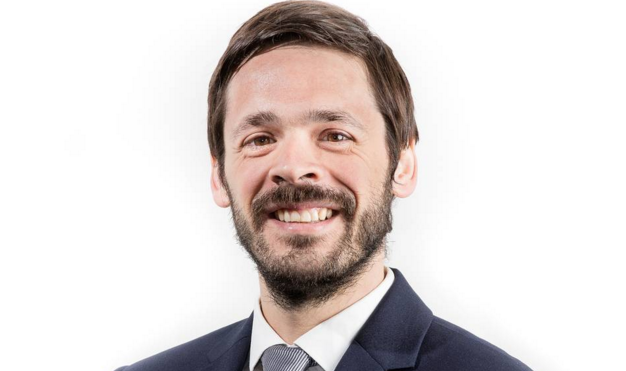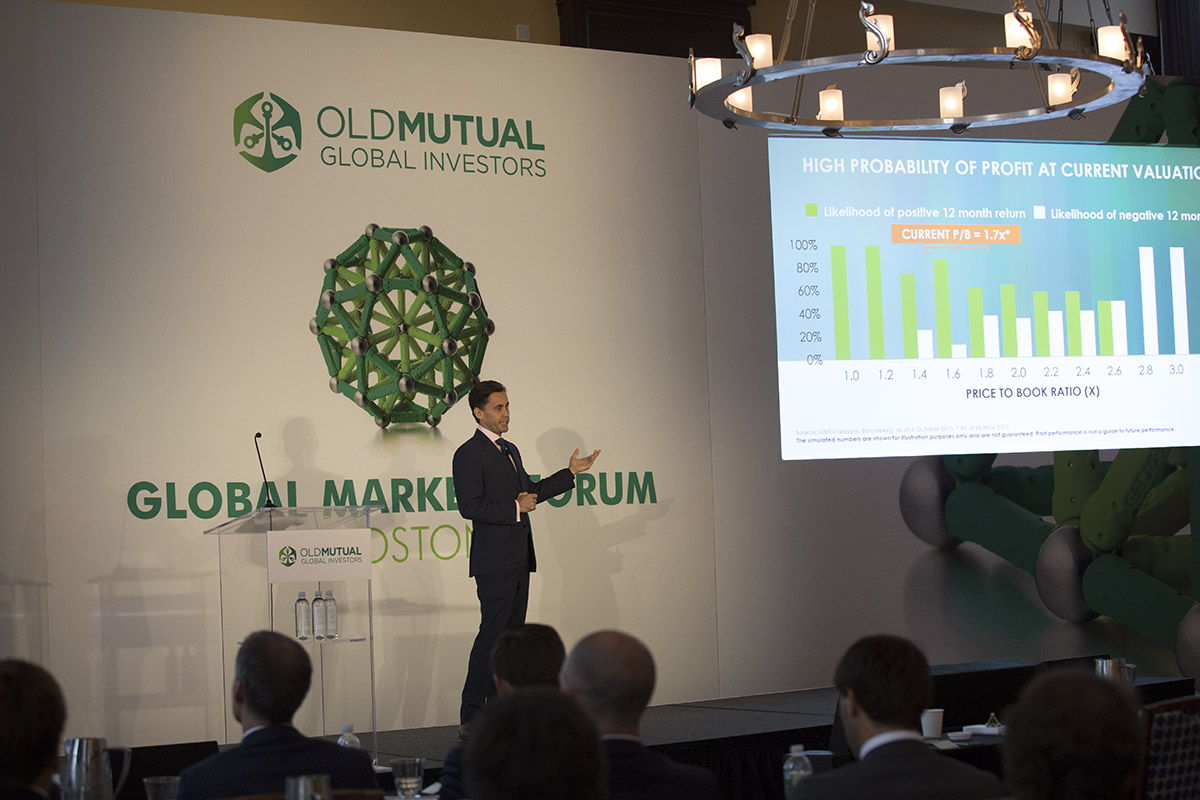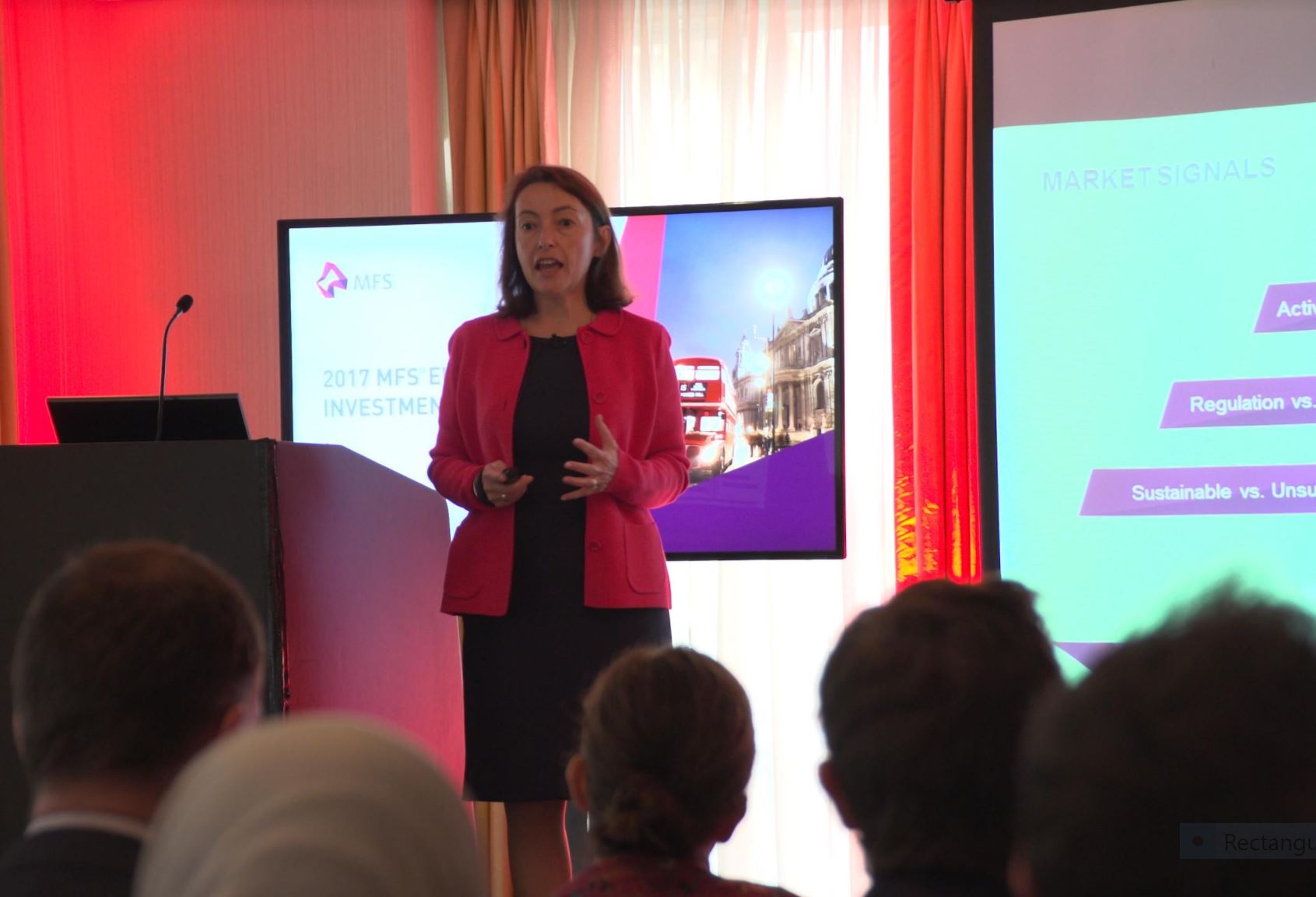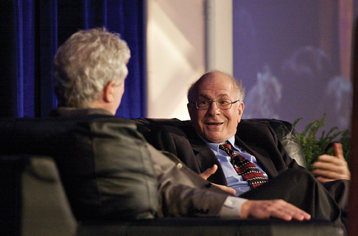Ian Heslop (Old Mutual GI): “Our Strategies are Not a ‘Black Box’, but Rather a Very Transparent ‘Glass Box’
| By Meritxell Sedo | 0 Comentarios
During his presentation at the OMGI Global Markets Forum in Boston, and questioning conventional investment thinking, Ian Heslop, Head of Global Equities at Old Mutual Global Investors, explained the double difficulty of forecasting market behavior. It’s often quite easy to make a mistake when forecasting, but even when the outcome of an event has been forecasted successfully, guessing the market reaction is just as complex. “If someone had been able to foresee the Brexit result, they could have guessed the market’s behavior for about 7 days. If someone predicted that Donald Trump would be elected for president, they could have guessed market behavior for about 7 hours. As a team, we try not to forecast, especially as regards market reactions.”
Another important issue, according to Heslop, is that investors have lost confidence in active management. In the United States, only 27% of active managers are able to beat the S & P 500, the main reason is that many fund managers are not taking enough risks to beat the index: “Firstly, if investing in an active fund which is not taking sufficient active risk, but which charges active management fees, the return will be lower than the index. Secondly, the S & P500 index is also said to be a very efficient index, which it is, to a certain extent, but to attribute the lack of higher yields to the index’ efficiency is to greatly simplify the argument. The difficulty in consistently outperforming it is real enough, but I don’t think it’s based on the efficiency of the index itself. The third reason would be concentrating on a particular style. Active funds are often cyclical in nature. Sometimes it is the value style that gains the favor of the market, in others it is the growth style, or the quality, if the fund only takes into account a particular style of investment, it will not be letting compound interest act correctly, lagging behind the market at some stage.”
As a result, investors have turned their backs on active investment by investing more than US$ 1.4 trillion in US equity ETFs since 2007. “The main problem with indexed products is that investors think they are buying diversified exposure to the US equity market, when in fact the portfolio’s performance comes from 10 shares of the S & P 500. Partly, because these companies represent a significant part of the economy, but to a larger extent it’s due to flows. “
Helsop cited as examples those ETFs that invest in the 100 less volatile stocks of the S & P 500 index, the valuations of which, in terms of price to book value rates, have increased substantially, increasing from 2.37 times in 2013 to 3.59 times in 2017. Another trend is the purchase of equity ETFs with high dividends. Investors often do not take into account their exposure in terms of risks, and are unaware that they are actually buying risk of size, momentum, market sensitivity or beta. “It should be noted that some of the dislocations in the US equity market are directly dependent on the extensive use of ETFs by investors, both from the point of view of market capitalization and from the point of view of exposure of styles in the portfolio. Investors find it very attractive that a particular investment environment can work all of the time, but this is not the case.”
How do we solve the problem?
The market sentiment and perceived level of risk in the market are two factors that determine which type of values are going to perform better than the index. At the end of the first quarter of 2016, the markets were going through a scenario of high volatility with a very negative sentiment. With a macroeconomic scenario very different to that in 2008, the market reflected an environment with little appetite for risk, behaving in the same way, but for very different reasons. Looking at the market’s behavior during the third quarter of 2017, the markets’ scenario is of low volatility and high optimism, where risk appetite has increased. “The approach that active management must take in both scenarios is different, so obtaining results above the index is extremely difficult, being especially complicated if it aims to forecast the outcome of an event and the market’s behavior towards it, something which depends on the sentiment. However, if we try to locate which moment the market is at by measuring its evolution against the change and then adjusting the portfolio accordingly, we will be somewhat behind the market, but we maximize the time in which we have a signal located, being able to discard noise. On the negative side, if we see a very abrupt change over a very short time, it will take a while for the portfolio to adjust. For each period of rapid adjustment to a new state in the market, there are multiple periods of time in which there is no direction in the market, minimizing the loss in those moments.”
The investment and stock selection process
Old Mutual Global Investors’ global equity team uses five variables or themes to identify which type of company will achieve a good result at each moment in the cycle: a dynamic valuation that allows them to be alert at every moment of the cycle and to buy a certain style of investment, sustainable growth, which looks for opportunities within the market, analyst sentiment, which allows them to assess what happened in the company, the company’s management team, whose communications are used to control whether they are acting in the best shareholder interest, market dynamics, with which they try to understand the demand and supply of each stock.
“Our way of managing strategy is not a ‘black box’, but rather a very transparent and rigorous ‘glass box’. We invest and create portfolios in a very rigorous way. The investment process uses the five themes to have or not to have assets in the portfolio. We look at metrics for valuation, quality, growth, revenue, information, momentum, and trends, but what really sets us apart is that we are trying to understand the motives that make a stock perform well. There are environments in which the market is willing to buy stocks of a certain style: value, growth or quality, and if at that time you maintain exposure to that particular style in the portfolios, it will most likely add return to the portfolio”
Helsop also commented that what really matters to the management team is to know the elements that are influencing the market’s direction, something that is the key to understanding how the investors will behave. “We try to respond to the requirement that clients have for a different type of alpha, without forecasting or minimizing the amount of forecasts we use. In our alpha generation process we don’t consider a top-down macroeconomic analysis or a fundamental bottom-up analysis, but we mix all the factors and the result is a different approach that provides the opportunity to diversify”.
Funds under the same approach
With nearly 18 billion in assets under management, Old Mutual Global Investors’ equity team manages a number of different strategies; all of them with a high active share. The Old Mutual North American Equity fund strategy, the Old Mutual Global Equity Fund and the Old Mutual Global Equity Income fund are long-only strategies. The first one has about 200 securities in the portfolio and has been managed by Ian Heslop’s team since 2013. The second one has approximately 450 securities and the third has 500 securities and doesn’t invest in those classic names that pay a high dividend and that the rest of funds have in their portfolios. Lastly, the Old Mutual Global Equity Absolute Return strategy with over 650 names in the portfolio is market neutral, being a clear example of how the five factors combine to generate alpha in a different way from the rest of the market. This fund manages about 11 billion dollars in assets.





